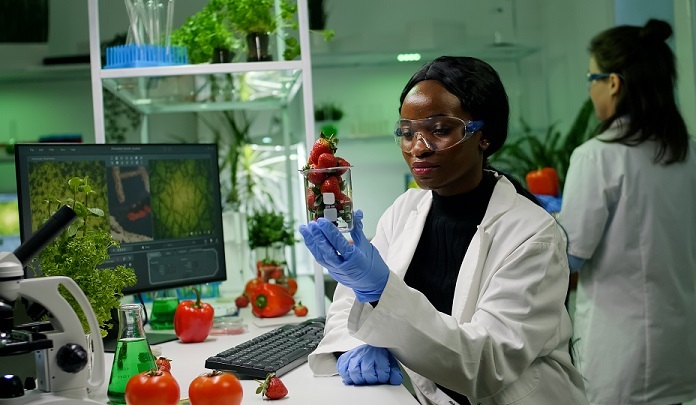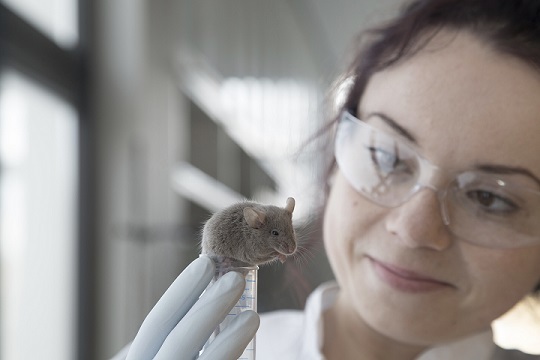
 Data Structure
Data Structure Networking
Networking RDBMS
RDBMS Operating System
Operating System Java
Java MS Excel
MS Excel iOS
iOS HTML
HTML CSS
CSS Android
Android Python
Python C Programming
C Programming C++
C++ C#
C# MongoDB
MongoDB MySQL
MySQL Javascript
Javascript PHP
PHP
- Selected Reading
- UPSC IAS Exams Notes
- Developer's Best Practices
- Questions and Answers
- Effective Resume Writing
- HR Interview Questions
- Computer Glossary
- Who is Who
Food Technology and Nutrigenomics
Introduction
Simply, nutrigenomic defines how the diet acts on genes and changes gene expression which is commonly prominent in cancer like non-communicable diseases.
The usage of food science in the selection, preservation, processing, packaging, and distribution, is known as food technology.
Early studies in food technology were primarily concerned with food preservation and inventions like food canning, milk powder, freeze drying, etc., Our world has transformed and been tremendously impacted by advancements in food technology.
Nutritional genomics is the most recent branch of science that examines the connection between genes, nutrition, and health.
The application of genomics to nutrition is called nutrigenomics. With the use of cutting-edge methods like transcriptomics, epigenomics, metabolomics, and proteomics, this area of science has emerged as one that reveals connections between nutrients, the human genome, and health. This new science demonstrates,
- The impact of dietary bioactive compounds on gene expression.
- How nutrients affect the way our genes work and how they influence the development of disease, and
- Molecular connections between foods and genes.
What Is Food Technology?
The production, preservation, quality assurance, and research and development of food items are all aspects covered in food technology, which is a subfield of food science.
New technologies for processing raw materials, product packaging, and innovative food additives are just a few examples of innovation in the food industry. Using innovative approaches may lessen or stop harmful alterations brought by microorganisms, like oxidation of food components, and enzymatic and non-enzymatic responses.
In addition, to this improvement in food composition, including organoleptic alterations, and changes in the perception and pleasures associated with eating food may result in the delivery of healthier and more nutritious food as well as better-tasting food.
Emerging technologies in the twenty-first century include cellular agriculture, including cultured meat, 3D food printing, and the usage of insect protein.

What Is Nutrigenomics?
In order to adopt individualized nutrition guidance and create functional diet plans that will allegedly maximize health as stated by individual needs, this emerging field brings together scientists, legislators, and healthcare professionals.
The pathway of our cells' and biological systems' growth is influenced by how we eat, what our parents ate, and how that relates to our own diet. Also, it is similar to how the diet will direct our anatomical development along specific paths depending on our genetic makeup.
Nutrigenomic profiling will help identify the mechanisms that underlie individual variations in dietary requirements and the capacity to respond to interventions using food.
The ability to better understand how genetic variation plays a role in underpinning some of the vulnerability for nutrition-related illnesses has been made possible by the advancement of methodologies in genome analysis.

Interaction of Nutrients and Gene Expression - Nutrigenomics
With the action of nutrients on our genes, genetic expression and phenotype can be altered. Nutritional factors influence normal cell growth by acting as a ligand for transcription factor receptors.
Moreover, food can affect gene expression through metabolism. By changing the concentrations of substrates or intermediates, these impacts can be applied to either primary or secondary pathways. Moreover, diet consumption can affect normal cell growth by moving along signaling pathways.
Nutrients Work as Gene Switches - (An experiment in mice)
Using rat models and cell culture studies, researchers have investigated the impact of food intake on illness and gene expression that is prevalent. A change in DNA methylation is linked to some disorders that are becoming more common.
The process of DNA methylation involves converting the methyl donors found in foods like folate, vitamin B12, methionine, betaine, and choline as well as foods like garlic, beets, and onions into energy.
Mice with the agouti gene, which turns them yellow rather than brown, are hungrier and obese. They were more vulnerable to problems like diabetes and cancer due to the presence of this gene.
Scientists have demonstrated that altering the mother's diet before, during, and after pregnancy?using dietary supplements high in methyl donors?can influence changes resulting from variations in the expression of the agouti gene and coat color appearance.
In the growing young agouti mice, the chemical nutrients linked to the agouti genes may function as a chemical switch toward the genes.
Although the genes and DNA coding were still present, gene expression was no longer active. The newborn mice were brown in color, had typical appetites, and lived long healthy lives.

Application of Food Technology and Nutrigenomics
Following are the highlights of applications in the field of food technology :
- Instant milk powder has been used as the foundation for a number of novel, and rehydratable goods.
- Freeze-drying.
- Coffee and tea decaffeination: Process improvement Oil-saving technologies are now available in a variety of forms, and food technology has made it possible for food production to be more efficient.
- Aseptic Packing-Filling a commercially sterile product into a sterile container.
- Food irradiation, which involves subjecting food and food packaging to ionizing radiation, can successfully eliminate pathogens that cause spoilage and foodborne illness as well as prevent sprouting, so prolonging the shelf life of food.
- Ethylene is a plant hormone used in commercial fruit ripening facilities.
Following are the applications in the field of nutrigenomics:
- Dermagenetics is one application of nutrigenomics (testing for specific genetic alterations related to skin health that lead to a skin cream or cosmetic advancements) that is driving the marketization of cosmetic products with a focus on the general public.
- Individualized nutrition counseling that will improve health in accordance with individual needs is in demand.
- By creating individualized nutrition to enhance athletes' performance.
- Enhancing health and preventing disease through individualized dietary and lifestyle recommendations and successfully managing chronic conditions.
Conclusion
Finding answers to new problems is challenging due to the complexity of food and polygenic disorders (such as diabetes, cancer, and others). These technologies are expensive, which places limitations on developing nations. The application of these essential technologies in developing nations is particularly constrained by the necessity for sophisticated research investigations.

